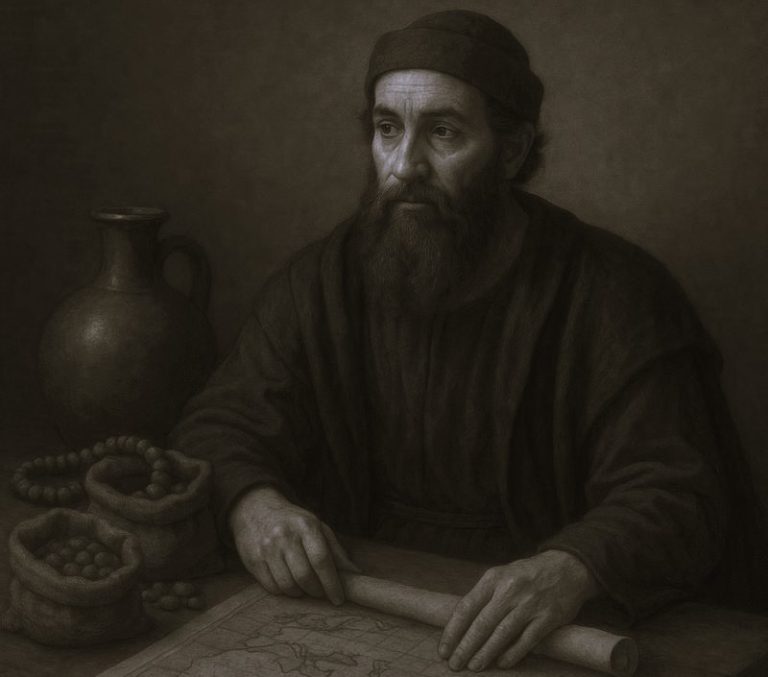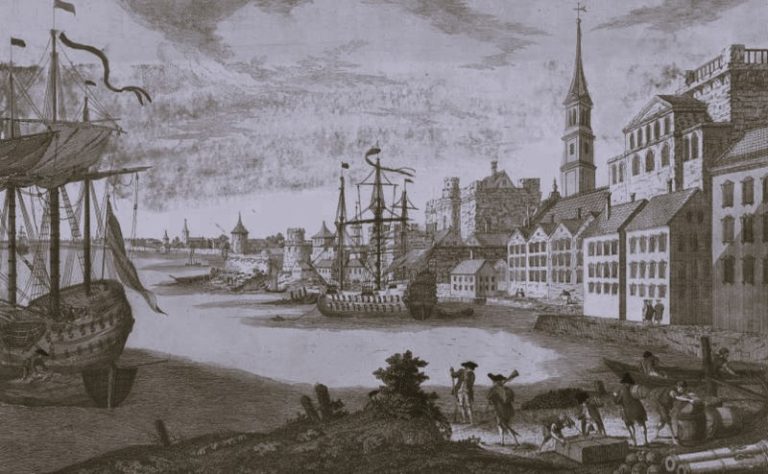

Curated/Reviewed by Matthew A. McIntosh
Public Historian
Brewminate
Introduction
Abel Buell, born in Killingworth, Connecticut, was a goldsmith, silversmith, jewelry designer, engraver, surveyor, printer, type manufacturer, mint master, textile miller, and counterfeiter in the American colonies. Buell’s New and Correct Map of the United States of North America is the first map of the newly independent United States compiled, printed, and published in America by an American. This important early American map is known to exist in only seven copies. He was also an inventor. He invented a lapidary machine to cut and polish gems, a minting machine that could product 120 coins per minute, and machines for planting onions and corn. He was the first man to design and cast type in the United States.
In 1770, Buell moved to New Haven, Connecticut and went to work for cartographer Bernard Romans. After the American Revolutionary War ended, Buell used the minting machine he had invented to mint the State of Connecticut’s first official copper coins. Connecticut coppers were struck from 1785 to 1788 by Buell. Buell engraved the dies for the Connecticut copper coinage as well as the dies for the Fugio cents – America’s first coinage. By 1784, Buell cast his own typeset and published the first American-made map of the United States. The wall map measured 43 × 48 inches, was printed in four sections, and hand-applied watercolor gave the map its color.
John Mitchell’s Map of the American Colonies

This landmark map of North America published in 1755 represents British sovereignty over the continent at the outset of the French and Indian War. It is perhaps the most well- known map of the eighteenth century. Created by John Mitchell, a native Virginian who moved to London in his middle-thirties, the map was compiled using information provided by governors of the British colonies. Although territories of other European powers are shown, the map is biased to British interests. French claims in the Mississippi and Ohio valleys, as defined by the Treaty of Utrecht (1714), are not recognized and, instead, English colonial claims extending west of the Alleghenies to the Mississippi River are emphasized. In addition to providing a vast amount of geographic knowledge, the map can be seen as an expression of English dominance in North America. This map was used to establish boundaries of the United States at the 1783 Treaty of Paris.
A comparison of the ornate cartouche on this map with the one on Buell’s 1784 publication, suggests a strong design influence. Additionally, the colonial claims extending from the Atlantic coast on this map can be likened to the state claims extending to the Mississippi on Buell’s 1784 map.
The British Empire and Its Limits

Following the 1763 Treaty of Paris, which officially marked the end of the French and Indian War in North America, the major European colonial powers divided the continent of North America. Article VII of the 1763 treaty, prominently displayed in the lower right of this map, establishes the boundary between French and English territory in North America as “a line drawn along the middle of the River Mississippi.”
The colonial boundaries shown on this map, as determined by the treaty, represent legitimate English possession of territory east of the Mississippi River rather than claims to the same territory expressed on earlier maps, such as the John Mitchell map.
Map of the Trans-Allegheny Region

First published in London in 1778, and based on earlier surveys and contemporary maps, this map by Thomas Hutchins depicts the river systems of the Mississippi and Ohio river valleys. At the time of publication (1778) these rivers served as major transportation routes and can be considered as the equivalent of today’s highways. The map includes valuable information that was highly sought after at the time, including descriptions of the landscape, river navigation, natural resources, and local inhabitants, both European and American Indian.
A comparison of Hutchins’s map with that of Abel Buell indicates that Buell likely consulted a copy of this map to prepare his 1784 publication. This is evidenced by no less than eight descriptions of geographic features that appear, word for word, and in exactly the same location, on both the Hutchins and Buell maps.
Revolutionary Map of New Jersey, 1777

William Faden, a noted English publisher who specialized in maps and prints, published his The Province of New Jersey divided into East and West, Commonly called the Jerseys in 1777. The map is often considered a “revolutionary” map for both its detailed depiction of topography in the northern part of the state, and its indication of boundary lines demarcating “West Jersey” and “East Jersey.”
The map features an extraordinary number of city and town names throughout the colony. Although the level of detail is much greater on this map, a comparison of those place names with those found on Abel Buell’s Map of United States of North America suggests this map as a source.
Abel Buell’s ‘New and Correct Map of the United States’, 1784

This landmark map of extraordinary significance to the historical record of the United States was published by Abel Buell in 1784. Notably, this is the first map of the newly independent United States compiled, printed, and published in America by an American. Additionally, it is also the first map to be copyrighted in the United States. Only seven copies are known to exist and survive in major institutions in the United States, the United Kingdom, and Spain. The copy on display is considered to be the best preserved of all extant editions and was officially deposited with the Library by Mr. David Rubenstein in January 2010.
The Second Map Created and Printed in the United States

On August 9, 1783, Philadelphia mapmaker William McMurray placed an advertisement in the Pennsylvania Packet, a Philadelphia newspaper, for a map entitled The United States According to the Definitive Treaty of Peace. McMurray solicited money for the publication of his map by issuing subscriptions such as that issued on October 24, 1783, shown below the map. Once a sufficient number of subscriptions were sold McMurray planned to have his map engraved and printed. The subscriptions were for three-and-a-half dollars—one-and-a-half dollars up front, the remaining two dollars due upon delivery of the map. Unfortunately, orders came slowly and McMurray’s map was not published until December 1784, almost nine months after Abel Buell published his New and Correct Map of the United States of North America.
For more than a century historians have considered McMurray’s map as the first map published in the newly independent United States. It has since been thoroughly documented as the second map printed in the United States after the Treaty of Paris was signed in 1783.
This map includes the names and boundaries of the original thirteen states in accordance with the 1783 treaty and also delineates the boundaries for ten additional unnamed states northwest of the Ohio River.
Originally published by the United States Library of Congress, 11.11.2013, to the public domain.







